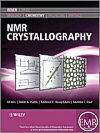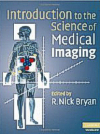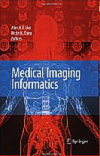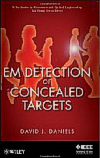February 13, 2010

| NMR music and other issues
Nearly a month has passed since my last entry and some friends started wondering whether I was ok. So, first of all, don't worry, I will not abandon you yet - just my computer did and, as usual, it did so at the most inopportune time when I was really busy trying to meet a couple of deadlines. Presently I am working on ASV (automatic structure verification) and, as part of it, on automatic solvent recognition. I want to come back to it on these pages, illustrating how complex deuterated NMR solvents really are, how easy/difficult it is to locate their peaks in a spectrum when doing it "manually", and how the solvent producers could improve the situation.
I am also terribly behind schedule since I promised to answer a number of queries and was prevented from doing so by computer Gods and by my own inefficiency. They include the butane spectrum (open since almost a year) and, more generally, spectra of molecules with bi-methylene bridges, some aspects of phase cycling, the structure of NMR Hamiltonians, several aspects of data acquisition, the limits of DFT (digital Fourier transform), and a number of other topics. Maybe I should write a book, but the topics tend to be too disparate, and I do not have the time. I just keep promising too much. Anyway, that is what should be coming, so keep in touch.
In the meantime, some friends were quite busy. Glenn Facey on his University of Ottawa NMR Facility blog continues with his frequent entries regarding various phenomena of NMR spectroscopy. They are eminently practical, nicely illustrated and highly educational. I have so far refrained from commenting them on his blog because I have never noticed any conceptual error to correct, and also because my comments would just complicate things with marginal aspects exceeding the real needs of Glenn's intended audience. His entries have a standardized format: an introduction to an effect/phenomenon, an illustration, and a brief comment explaning the "why's" and, above all, the "how to's". I hope that he will eventually collect the whole series into a booklet (given their format, the entries are also very Kindle-worthy). It would be a hit and a great educational tool!
Another busy man is Carlos Cobas who, apart from being the President of Mestrelab Research (a Spanish NMR software company), is also an ex drummer. As such, he is fascinated by the relationship between NMR and music and the use of music as an educational tool in NMR. This is not a new topic, really. In late seventies and eighties many NMR spectroscopists hooked one or both of their NMR audio-frequency output channels (then called "u" and "v") to one or two speakers (via amplifiers, or course) so they could listen to their FID's. Some even claimed they could use the setup to shim their magnets - a feat I was never able to emulate, probably because of my lack of a musical ear. Back then, of course, we were used to much better resolutions than today and some FID's lasted nearly a minute. With the advent of high-field spectrometers and the atrocious 1 Hz linewidths, the whole FID makes just a totally unsatisfactory "ping" - a reason why the spectrometer-cum-speakers concept was abandoned.
In two recent entries on his blog, Carlos mentions the web pages of Walter Bauer (NMR meets Musicians), an early explorer of the musical aspects of NMR. More recent initiatives of this kind include a poster at the 50th ENC conference (NMR as Art, poster #515) by Josh Kurutz from University of Chicago. Carlos brings this topic decidedly a step further - he is after reproduction of popular musical themes by a series of audible FID's. If he continues along this line, we will eventually have full-fledged 2D and 3D NMR musical compositions! You will need at least a demo version of the Mnova software to reproduce them, but what is such a small sacrifice compared to the unique artistic experience of listening to a masterpiece like "Testosterone HSQC for 700 MHz" !? :-)
|
January 17, 2010

Ed. R.Harris et al
| Recent NMR books
Of the 18 NMR and 5 ESR books which were announced in 2009 and slated for publication within last year, most (though not all) made it on time. These are the two most recent titles:
You might also wish to check new issues in the periodic monograph series (I have just updated the list). These include four Annual Reports on NMR Spectroscopy
(Academic Press, volumes 65, 66, 67, 68), one of Biological Magnetic Resonance (Springer, volume 28), and two volumes of Progress in NMR Spectroscopy (Elsevier, volumes 54, 55; though this is now more like a Journal).
Most of the monographs are available from Amazon which is where my links will usually bring you. For Tables of Contents just hover the mouse cursor over the image of each book on the Amazon page - usually it is available.
|
January 13, 2010


AGILENT
| Agilent - Varian merger update
Many readers ask me what happened to the announced merger of Varian with the much larger Agilent which was a big news last Summer (see also) but which nobody is talking much about today, except Bruker vendors who are busily trying to woo Varian NMR users into their camp (uncharacteristically, Bruker has even dusted off old withdrawn units for a possible resale). There is also some unusual promotional and commercial activity on the Varian side - I have received more promotional Varian e-mails in the last 3 months than in the three years before. One was from "varianconsumables.com" - a site registered by The Linus Group on 15 Oct 2009 which does not even have Varian looks (just the logo) and which made me wonder what was going on.
What happened is that the merger, which was to be concluded by the end of 2009, got stuck in the waiting rooms of the European anti-trust authority. Varian is a US company just as much as an EU company (see Quo Vadis, Varian), so the Europeans do have a say in the deal. On the US side of the Atlantic the merger went relatively smoothly through all the expected stages: first Varian stock owners started a class action suit trying to get a better deal from Agilent but, since the $52/share deal was not really bad, the motion ended up with a settlement involving approximately 1M$ (negligible compared with the 1520 M$ tab of the whole merger) and an official OK from the shareholders association. Then the US Securities Exchange Commission (SEC) and the Federal Trade Commission (FTC) asked for more information before rubber-stamping (sorry, see the Errata Corrige below) the request, but that is a standard ritual.
The EU Commission did essentially the same (EUR-Lex C289/26 of 28 Nov 2009), but stressing accents enough to make it clear that it might mean business. To me it seems unlikely that they might stop the deal, however. After all, when a company of size 7 merges with a company of size 1, becoming size 8, it is hard to cast it as the birth of a new trust. But everything is now frozen at least up to 20th of January (one week from now), the date when the Commission should announce its decision (see this and this).
Until then - and possibly longer - things are on a stand-by, including Varian stock prices and trading. Varian employees are generally optimistic about their future, but apparently just as uninformed as everybody else. The rationale is that nobody pays over 1.5 Giga-bucks for something without having a pretty good idea about what to do with it.
ADDENDUM and Errata Corrige:
21 Jan 2010:
The Agilent - Varian "merger" got a conditional (?) official approval by the EU. This completes most of the bureaucratic chores required to make the de-facto takeover an operative reality. What will come out of it remains to be seen. Possibly a 10 times stronger competitor to Bruker - and God knows how badly they need one (see the group delays story)! Or else just a new line of NMR-based HPLC detectors (not that those are not respectable, but ...).
Errata Corrige: I wrote above that FTC (USA) has rubber-stamped the merger request but now I read that its final approval is still pending. Sorry for the mishap; I find it difficult to believe that for once we Europeans are faster!
Some links pertinent to the EU ruling:
EU conditionally approves Agilent's Varian buyout.
Agilent buy of Varian cleared, with conditions.
Agilent Technologies' Acquisition Of Varian Cleared By European Commission.
European Commission OKs Agilent's Acquisition of Varian; FTC Approval Still Pending.
|
January 9, 2010
Just published:

Nick Bryan
Introduction
to the Science of
Medical Imaging

A.Bui, R.Taira, Eds
Medical Imaging
Informatics

David Daniels
EM Detection of
Concealed Targets
Ch.4 deals with
NQR detection
of explosives
Security and
medical imaging
are two faces of
the same coin!
| MRI versus competition
We are so fond of magnetic resonance that we sometimes forget there are other imaging modalities - some much older than MRI and some that have not yet reached maturity but are lurking behind the corner. I was a bit surprised when Jimmy Atkinson of Diagnostic Medical Sonography Degree informed me that my blog was selected among the top 50 on their list. They are an agency for online sonography imaging-technician degrees, but they evidently keep an eye on MRI. In any case, it is a honor. Thanks, Jimmy.
MR is of course part of a much broader class of imaging physics. I was thinking since some time about establishing a separate list of books, for example, to cover those aspects of imaging physics, technology and informatics which can not be specifically labeled as MR. On my MRI books list I have so far listed such monographs in the related works category, but that is very incomplete. I will start within this month.
I was also thinking these days about novel imaging techniques which are on the horizon and which might develop much faster than expected. They fall in two categories, both presently associated with security imaging rather than high-resolution medical imaging. However, the line between these two areas is very thin and flexible. Give the 'new' technologies two decades of development and they might yet beat MRI. With the present worries about security at mass-transit locations, they will certainly not suffer from lack of funding!
The first category is that of plain radio scanning based just on bulk electric susceptibility and magnetic permeability variations. What got me thinking was a recent article on RF Globalnet Newsletter about an application of RTI (Radio Tomographic Imaging). I was often thinking about this possibility, though in a different layout: place a person/object into a sphere made of radio-transparent material, dislocate around it M transmitters and N receivers, and then send coded signals from combinations of the transmitters and detect them by all the receivers (the coding would help to eliminate random noise). In nearly linear-response systems, one can empirically pre-calibrate the response functions for every transmitter-receiver pair and for every voxel of the FOV and thus be able to carry out the image reconstruction of any object (it is essentially just a large matrix inversion). With no need of any theory - just an empirical calibration! Anyway, if something like this works today with a resolution of a couple of feet in a room-size area - and using just 1 transmitter and 28 receivers - imagine what it might do in a 2 m sphere covered by a thousand RF transceivers. At current prices of the chip-size devices, the cost would be peanuts, and one would need no magnet!
In the second category are the body scanners they start nowadays deploying at the airports. They are based on sub-millimeter microwaves emitted spontaneously by [warm] human bodies. Such waves are already close to the far infrared region (remember that infrared radiation is already used for imaging, both in outdoors IR surveillance and in medical thermography). Electromagnetic waves of this kind (the terahertz region) penetrate biological tissues to much greater depth then IR and have enough distinctive spectral features to allow considerable degree of chemical discrimination. Terahertz technology was until very recently considered as prohibitively difficult, but that has changed dramatically in recent years - it is now exploding and becoming a real buzzword in communications. So, once again: give this 20 years and where will it be? Probably peeking into our stomachs (if not minds) and producing detailed medical reports even while we leisurely stroll through a clearance room!
This is one potential advantage which the above modalities have over MRI: the responses are extremely fast - of the order of a micro-second at most, compared to nearly one second in magnetic resonance (dictated by the relaxation times). Consequently, such techniques might be potentially capable of taking "instantaneous" shots of a moving object, void of motional artifacts. Or, alternatively, use the time MRI would take to repeat the scan a hundred thousand times for better quality.
What should MRI do in view of the growing competition? Evidently, just claiming forever that it is "the best" might backfire. It would be nicer to have all the techniques collaborate. For example, we should have a software capable of combining all available images of a patient into a single 3D image of his/her innards in which each technique would contribute with whatever it is good at and, at the same time, help to remove other technique's artifacts. Then, adding one more imaging technique would amount to just plugging-in another data source. The task is staggering, of course (think of the 3D alignment problems). But when a physician is comparing three different types of scans, is he not doing just that?
|
January 6, 2010

| Fundamental MR constants
At New Year's eve a friend, wanting to test whether I was sober, asked me jokingly which were the three most important fundamental Magnetic Resonance constants. Since I did not quite pass the test, this entry is an attempt to repair my reputation.
I have actually selected five constants, two of which dimensionless, and expressed them the way we are used to in MR. I leave it to the readers to drop those which you think are less important than the others in any particular application field; I simply do not have the heart to do it myself. All values are updated to be coherent with the latest (2007) CODATA issue (see also my excerpt table). Ellipses are used to indicate the current uncertainty in the last two digits of each constant's mantissa, and square brackets after the value contain its SI dimensions (with slight liberties taken, such as the use of MHz and GHz symbols).
- γHs = 42.5763881(12) [MHz/T] : Gyromagnetic ratio of a shielded proton
Naturally, each nuclide with non-zero spin has a magnetic moment, a gyromagnetic ratio, and a g-factor and each of these quantities could be considered an MR constant, especially since there is so far no theory capable of predicting them. Consequently, they must be all considered as primary experimental data - an approach which, unfortunately, amounts to far too many 'fundamental' constants.
The γ of proton is an exception since in NMR proton (the nucleus of hydrogen) is by far the most often measured nuclide, and in ESR it is the most common nuclide which gives rise to a hyperfine interaction. Above all, however, there is the de-facto NMR convention according to which magnetic field induction B is commonly expressed in terms of the proton Larmor frequency. The convention is not really justified, nor is it condoned by SI, but it is strongly rooted in MR practice.
The above value is that of a standard 'shielded' proton, namely a hydrogen nucleus in pure water, whose γ is 25.694(14) ppm smaller than that of a free proton for which the γ value is 42.5774821(11) [MHz/T]. No standard shielded values are recognized by CODATA for other nuclides. Nor is the CODATA proton shielding standard a particularly lucky one since chemical shielding of water protons has a considerable temperature and pH dependence (tetramethylsilane would have been much better).
In any case, if you remember just 42.58 MHz per Tesla, you will be pretty close.
- γe = - 28.02495364(70) [GHz/T] : Gyromagnetic ratio of the electron
This plays the same role in ESR (EPR) as the corresponding quantity for proton plays in NMR. The negative sign indicates that, unlike in proton, the magnetic moment of electron is anti-parallel to its angular momentum vector. This is apparently understandable due to the opposite charge of the too particles, but the reality is a bit more complex, considering that many nuclides also have a negative gyromagnetic ratio (the smallest of these being 3He with just 3 nucleons!).
In compounds, unpaired electrons may get both shielded and de-shielded by their environment, resulting in a considerable variability of their experimentally observed g-factors. Since there is no conventional definition of a 'shielded' electron, the above value, pertinent to a free electron, is the best one can do in terms of standardization.
- γe/γHs = - 658.2276(35) : Electron/proton Larmor frequency ratio
This ratio indicates how much higher (in absolute value, and in any given magnetic field) is the resonance frequency of the electron compared to that of proton. It plays a fundamental role in phenomena involving transfer of magnetization between electrons and protons. Examples include dynamic nuclear polarization, relaxation in paramagnetic systems, NMR of proteins with paramagnetic centers, etc.
The above value was computed using the γ values of a shielded proton and that of a free electron. A more coherent but less practical approach would be to use the unshielded γ values of both particles, in which case γe/γH = -658.2107(35).
- γH/γD = 6.51439895(33): Proton/deuteron Larmor frequency ratio
Here the subscript "D" stands for deuteron and the value indicates the ratio of resonance frequencies of proton and deuteron when observed in the same magnetic field. The emphasis on the particular proton-deuteron pair is related to the fact that in NMR spectroscopy deuterons are commonly used to stabilize the magnetic field while protons (or other nuclides) are being investigated. The deuterons are supplied under the form of a deuterated solvent (internal lock) or a separate capsule with a deuterated compound (external lock) and each NMR spectrometer is equipped with a dedicated 'lock RF channel' (de-facto a second, independent spectrometer) operating at the deuteron resonance frequency. Notice that the ratio is that of free particles but it does not change with shielding, provided that one compares isotopomers of the same substance. Normally, however, the lock substance is different from the measured substance, a fact which affects significantly the resonance frequency of the observed nuclides (for example, when a different deuterated solvent is used, the absolute position of the 1H spectrum changes by the difference in the solvent shielding values). Again, it is a pity that CODATA does not standardize the deuteron shielding (for example, taking deutero-chloroform as a standard).
- h/k = 4.7992373(85)e-13 [K/Hz] : Thermal polarization constant
Here h is the Planck constant and k the Boltzmann constant. The ratio appears in the Boltzmann thermal equilibrium factor exp(-hf/kT) = exp[-(h/k)(f/T)], where f is the Larmor frequency of the investigated nuclides and T is the absolute temperature of the sample. Considering its small value, the product (h/k)(f/T) approximates well the relative degree of thermal spin polarization. For example, at Larmor frequency of 1 GHz and a temperature of 1 K, protons polarization is just about 4.8e-4. In other words, we observe just 0.048% of the magnetization we would have if all protons were aligned. Naturally, it gets proportionally worse at lower frequencies and/or higher temperatures. For a 1.5 T imager at room temperature it is just 0.000010% !!!
The above illustrates, among other things, how nothing is really simple, much less the task of standardization committees. In NMR the large number of 'magnetic' nuclides and the complicating factor of chemical shielding (up to several thousands of ppm for heavy nuclei) make a complete, across-the-board standardization nearly impossible.
|
|
Archive
| For a complete list of all entries since 2005, see the running INDEX
|
|
Visitor #

ADVERTISE with us
NMR, MRI, ESR, NQR
Companies
Societies
Centres & Groups
Journals & Blogs
References
Free Texts
History
Links
BOOKS Lists
MATH | SOFTWARE
PHYSICS | CHEMISTRY
ELECTRONICS | DSP
WWW | Patents+IP
SPECTROSCOPY
MRI | NMR | ESR
Instruments
ARTICLES
Scalar relaxation
Biography of F.C.Yu
Hebel-Slichter effect
MR Antenna Theorem
NMR Dead Time
One-Page MR Primer
K-space and MRI
S/N Perspectives
OTHER
SI Units |
Dimensions
Physics Constants
Science Links

Support this site!
SHOP from here:
COMPUTERS:
Deals
Bestsellers
Accessories
Calculators
This page is
SPONSORED by:


Random offers:
|